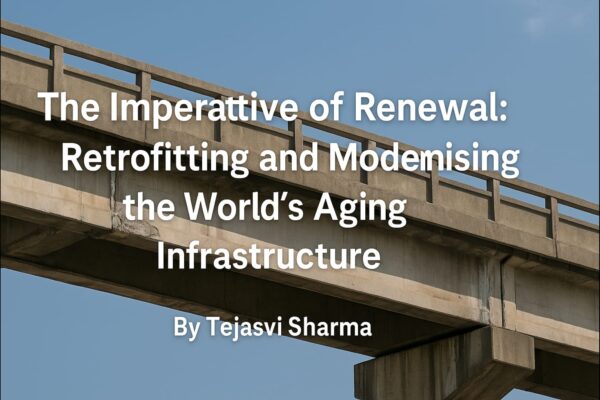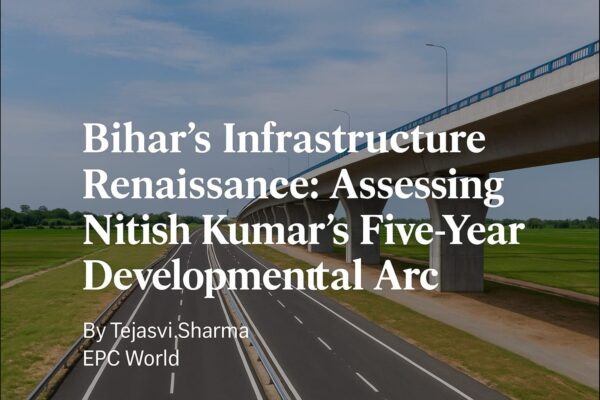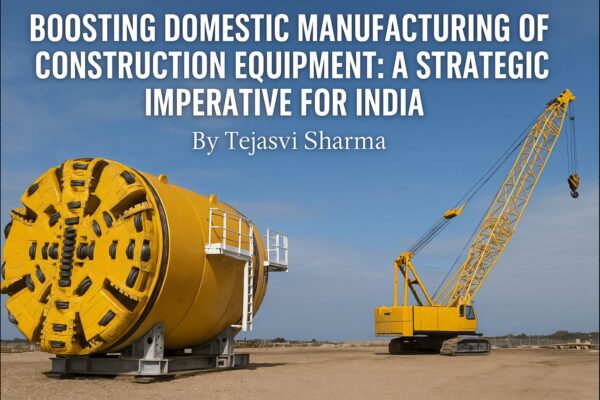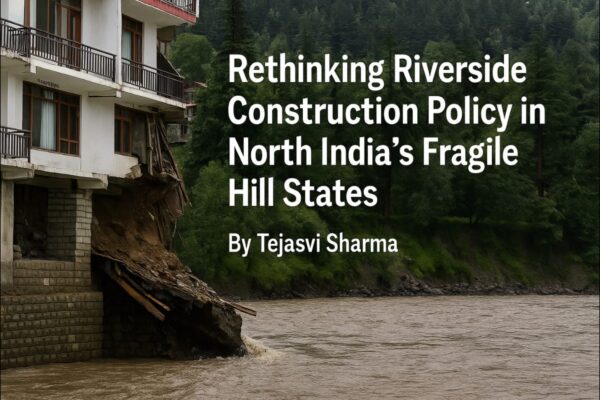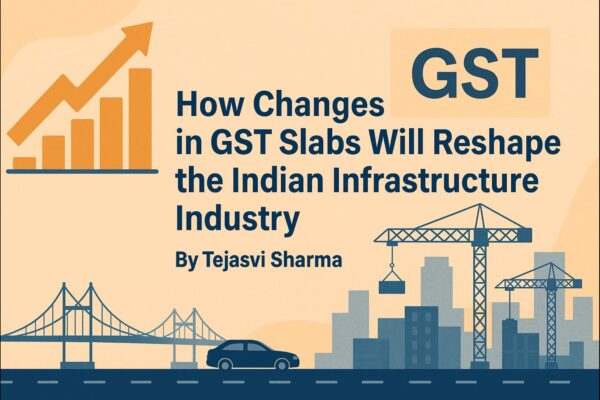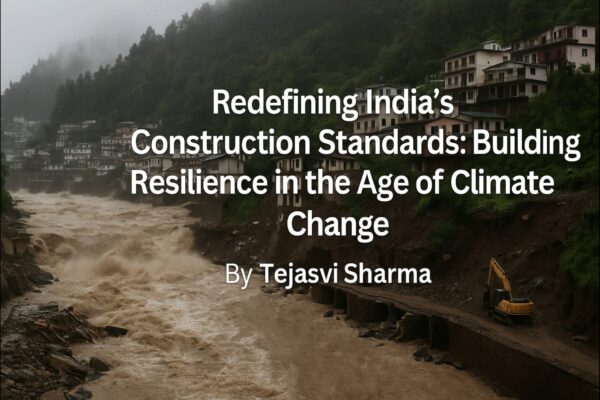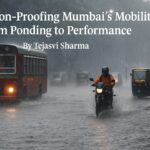Monsoon-Proofing Mumbai’s Mobility: From Ponding to Performance
by Tejasvi Sharma, Editor-in-Chief, EPC World
Every year, Mumbai’s monsoon acts like a stress test on transport and mobility. Rail corridors stall, arterial roads dip under brown sheets of water, and buses zigzag around invisible craters. Much of this isn’t just “rainfall”; it’s tidal hydraulics meeting urban hardscape. When the Arabian Sea is at high tide, storm outfalls can’t discharge by gravity, so water backs up into streets and tracks—what commuters experience as “ponding.” Cities that thrive in wet climates don’t fight water; they stage, store, divert, and then discharge it—predictively. Singapore, Tokyo, and Rotterdam offer blueprints Mumbai can adapt right now.
What planners are missing
Designing for tide-locked hours, not average rainfall
Capacity still often benchmarks rain intensity, while outfall throttling during high tide is the real bottleneck. When the sea is “closed,” the city needs temporary storage plus pumped evacuation, not just bigger pipes. Singapore’s Marina Barrage demonstrates this dual mode: crest gates dump water at low tide; pumps evacuate during high tide—an operational logic Mumbai must mirror at scale.
Distributed detention, not just linear drains
Legacy BRIMSTOWAD logic improved conveyance but left the city with limited places to hold water. Many trunk drains still trace 19th-century alignments and, under low-lying conditions, were historically sized for ~25 mm/hour during low tide—clearly inadequate when cloudbursts arrive during high tide. Mumbai needs a network of neighbourhood-scale detention basins tied to pumped outfalls.
Hydraulic redundancy for critical nodes
If one pump fails at a low point, an entire precinct floods. The city must hard-wire N+1 redundancy (extra pumps and dual power) at flood hot spots and treat high-risk junctions like “mini pumping districts.” BMC’s recent expansion of drainage and strategic deployment of pumps is a start, but reliability during peak events—and backup generation—must be guaranteed.
Blue-green surfaces to slow the spike
Hard paving shunts storm-water instantly to outfalls, peaking precisely when the sea is shut. Nature-based solutions (NBS)—rain gardens, bioswales, permeable corridors—delay runoff, trimming peak flows to pumps and pipes.
What’s working—and how to scale it
At Hindmata, a notorious bowl-shaped catchment, holding ponds plus a dedicated pumping station have been deployed to capture monsoon surges and lift them seaward when tides allow. Each pump can discharge thousands of litres per second; the twin ponds store crores of litres, buying time during tide lock. This is the right playbook—detain, then pump—and it must be replicated at other depressions along rail and road corridors.
The solution stack Mumbai needs now
1) Tide-smart storage & pumped corridors
Build a string of offline detention basins (parks, maidans, rail yards’ edges) connected to tidal pumping outfalls with one-way gates/mitre gates, preventing sea backflow. Mumbai already uses such gate technologies at key outfalls; standardize and modernize across the coast.
Size pumps to high-tide + cloudburst coincidences (not historical averages), with on-site switchgear, fuel, and UPS.
2) Convert public space into “water plazas”
Rotterdam’s Benthemplein Water Square doubles as urban plaza and temporary storm storage—exactly the kind of dual-use Mumbai can adopt in schools and maidans. Design basins that accept runoff during downpours and return as playfields within hours.
3) Build one “cathedral” per catchment
Tokyo’s G-Cans proves the merit of deep, large-diameter tunnels and shafts that intercept surges and move them to receiving waters by gravity/pumps. Mumbai doesn’t need one mega system; it needs several smaller, catchment-scale caverns under the east-west corridors to stage water until tides recede.
4) A city-scale tidal barrier strategy
Where feasible, micro-barrages/sluices on select creeks (paired with pumps) can isolate upstream basins during spring tides—adapting the principle of Singapore’s Marina Barrage to Mumbai’s estuarine geometry. Use it sparingly and surgically to avoid ecological harm, but deploy where dense transit and hospitals are repeatedly crippled.
5) Blue-green transit corridors
Retrofit bus and rail rights-of-way with linear bioswales, permeable shoulders, and infiltration galleries so that transport assets absorb water rather than shed it instantly to tide-locked outfalls. Couple with elevated refuge lanes for emergency buses and ambulances.
6) Predict-to-operate
Fuse IMD nowcasts + tide tables + pump telemetry into a Monsoon Mobility Nerve Centre. Pre-emptively lower upstream basins before forecasted cloudbursts, stage pumps to hot spots, and issue dynamic route guidance to BEST and suburban rail.
7) Codes and carrots
Mandate on-site detention for large redevelopments (podium tanks/green roofs) with discharge throttled by smart gates. Offer FSI incentives for sponge-ready campuses around stations.
Global playbooks Mumbai can borrow
Singapore—tidal barrier + pumps: Marina Barrage keeps tides out and, during high tide, pumps excess storm water to sea, proving that urban flood control, water supply, and recreation can coexist. Mumbai can adopt a modular variant for creek mouths that repeatedly paralyse mobility.
Tokyo—deep staging + diversion: The G-Cans network—silos, tunnels, and a cavernous pressure chamber—has demonstrably reduced flood damage and is now being expanded to meet more intense rains. The lesson: store big, move fast, and plan for tomorrow’s storms, not yesterday’s.
Rotterdam—public spaces that drink: Water squares and climate-adaptive streets store first, celebrate later, turning flood management into civic amenity. This model suits Mumbai’s schools and maidans, especially near chronic underpasses.
A mobility-first monsoon protocol
1. 48 hours before forecasted cloudburst: Draw down detention basins; test-run pumps; pre-position mobile units.
2. 12 hours before: Announce Monsoon Timetable—reduced headways on elevated metro, bus diversions away from low bowls, surge pricing for parking to dissuade car trips.
3. During event: Dynamic bus priority on elevated links; “green-wave” signals for ambulances; live advisories on rail block sections.
4. After: Rapid dewatering targets by catchment; reopen streets by storage-to-discharge clock, not by queue of complaints.
Mumbai doesn’t need to fear the monsoon; it needs to orchestrate it. By designing for tides, banking on detention, and borrowing proven tactics from Singapore, Tokyo, and Rotterdam, the city can keep wheels turning—even when the sky opens and the sea is shut.
Tags






